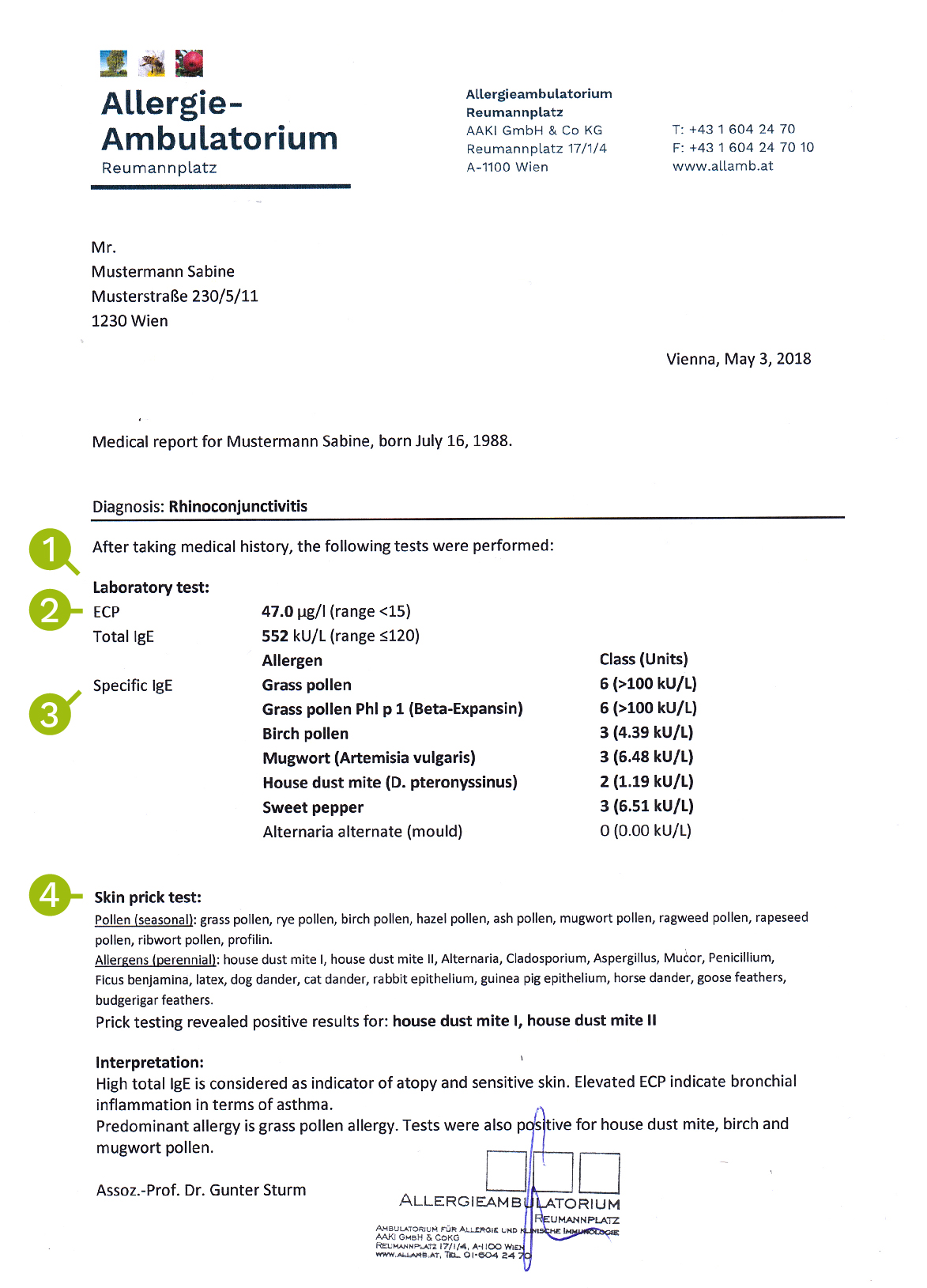
1. Blood analysis
Allergies are reactions of the immune system in which antibodies are produced. These antibodies belong to the immunoglobulin E class, or IgE for short, and can be detected using special laboratory methods. In particular, the value of total IgE and the value of specific IgE are of importance for the allergy test results.
2. ECP:
An elevated ECP value indicates inflammation in the lower respiratory tract. This value is tested for in patients reporting cough, bronchitis, or asthma. In addition, ECP is increased in people with atopic dermatitis (atopic eczema).
ECP correlates with the course of the disease in asthma and atopic dermatitis and is therefore suitable for determining the progress of the disease.
Total IgE:
Here the total value of allergy antibodies in the blood is measured. These are antibodies of the class immunoglobulin E. The normal value for total IgE in children is dependent on the child’s age and should be below 100 in adults. An elevated value indicates an “allergic tendency”. For people with allergies the values for total IgE are almost always elevated. If no allergy is present, the values are usually normal (under 100).
3. Specific IgE:
Here it is determined against which allergens specifically the antibodies of the class immunoglobulin E (IgE) are directed. Five to ten determinations per test are covered under your health insurance. The choice is made by the doctor according to the recorded medical history and the already available results of skin tests.
For several years a component-based allergy diagnostic has been possible. This can be used, for example, to estimate the risk of severe allergic reactions in the scope of latex or food allergies. If in your test results you see a letter/number code (for example, Bet v 1) in the IgE determination, then it is an allergen component. The name of the allergens follows a system: the first 3 letters are from the Latin name of the botanical genus. The single letter is the first letter of the botanical species. The number indicates the time of the description. The number 1 means that the allergen has been described as the first allergen. Therefore: Bet v 1 is formed from the Latin name for birch (Betula verrucosa). The allergen was described as the first birch pollen allergen and is the major allergen of birch pollen.
An allergy is reflected in an elevation of the measured value above 0.35 kU/L. For the sake of convenience, the result is also given in allergy classes from 0 to 6, but this has more historical reasons and usually has no significance for the severity of the allergy.
Important: the level of specific IgE does not necessarily have to be consistent with the severity of the symptoms!
4. Skin test:
Allergies are diseases of the immune system and are detectable in every part of the body. For the sake of simplicity, a test is performed on the skin to determine whether certain substances trigger an allergy in a human being. Depending on the presentation of the allergy, different forms of skin testing are required. Respiratory allergies are examined with the “prick test”, while skin rashes and eczema are examined with the “patch test”. In your results you will first find a list of the substances tested on your skin and then, under the category titled “findings”, it is reported whether the skin has produced an allergic reaction to one of the test substances.
A negative result means: no allergy could be detected on the skin.
A positive result means: there was an allergic reaction on the skin when tested with the appropriate material.
